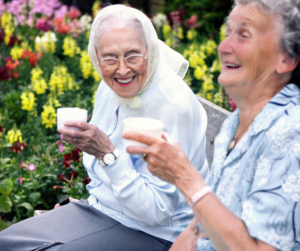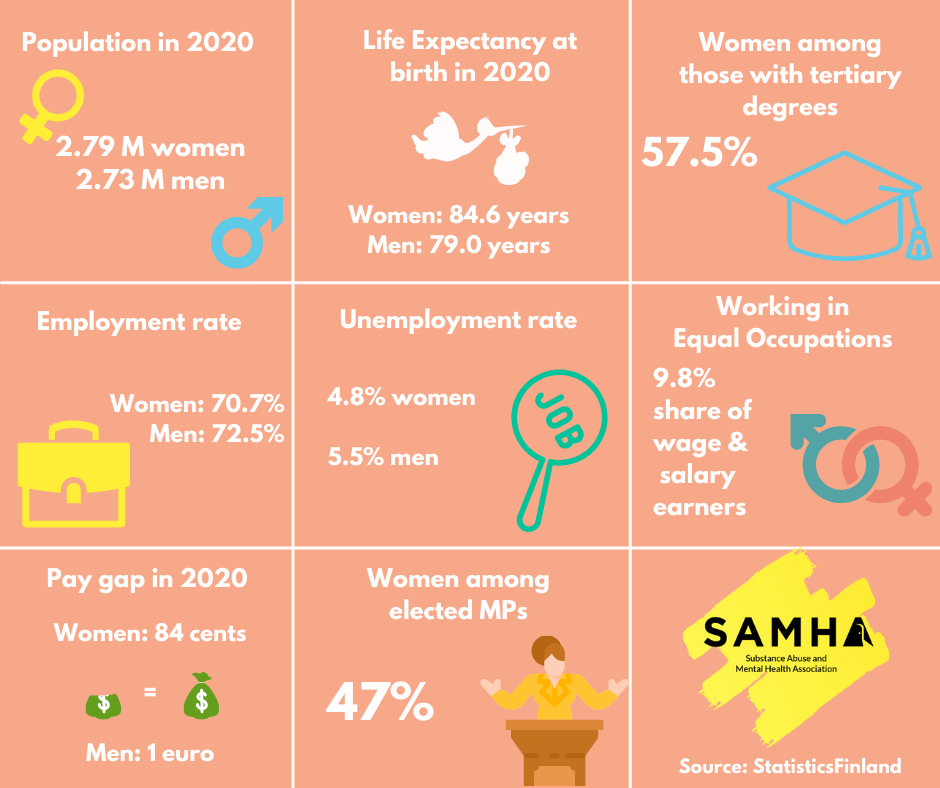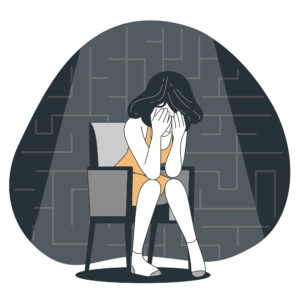International Women’s Day
International Women’s Day



A Summary of Women in Finland
According to data and a chart referenced from Statistics Finland, below you can see statistics of how women compare to men in Finland. This chart includes data relating to the pay gap, unemployment and employment rates of women, and other statistical data.

Happy International Women’s Day to all women and let’s look forward to a more equal future. If you feel that you are not being treated equally based on gender, reach out to us, and we can see how we can help. In Finland, women and men have equal rights and discrimination based on gender is illegal.
References
Finnish Institute for Health and Welfare (2022) “Milestones of gender equality” available at: https://thl.fi/en/web/gender-equality/promoting-gender-equality/milestones-of-gender-equality
European Commission (2021) “Gender gap at education level is shrinking, but women are still under-represented in research and innovation” Press Release, Brussels. Available at: https://ec.europa.eu/commission/presscorner/detail/en/IP_21_6217
Finland Toolbox (2021) “Finland-Society Committed to Gender Equality”, available at: https://toolbox.finland.fi/life-society/finland-society-committed-to-gender-equality/
European Institute for Gender Equality (2021)“Gender Equality Index”, available at: https://eige.europa.eu/gender-equality-index/2021/country/FI
Stryker S. (2020) “What Does It Mean to Be a Woman? It’s Complicated”, TIME Magazine available at:https://time.com/5795626/what-womanhood-means/
Haynes S. (2019) “The radical Reason Why March 8 is International Women’s Day”, TIME Magazine, available at: https://time.com/5187268/international-womens-day-history/
Fausto-Sterling A. (2018) “Why sex is not binary: The complexity is more than cultural. It’s biological too” The New York Times , available at: https://www.nytimes.com/2018/10/25/opinion/sex-biology-binary.html
International Women’s Day “About International Women’s Day”, available at: https://www.internationalwomensday.com/about
International Women’s Day “History of International Women’s Day”, available at: https://www.internationalwomensday.com/Activity/15586/The-history-of-IWD
Striking Women | Women and Work “19th and early 20th century”, available at: https://www.striking-women.org/module/women-and-work/19th-and-early-20th-century#top









